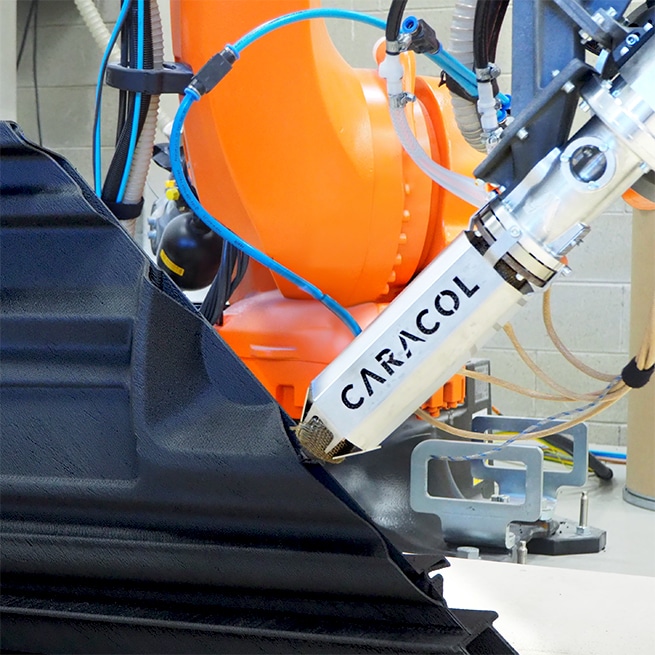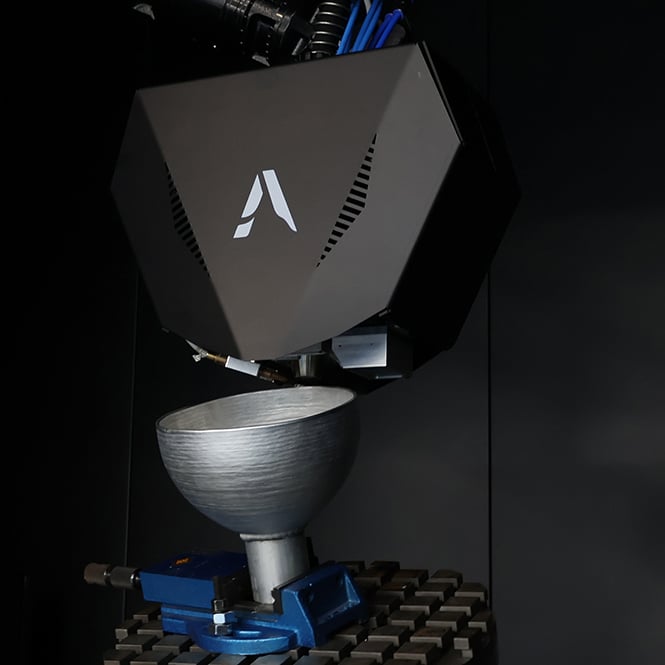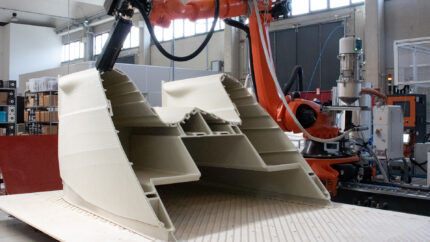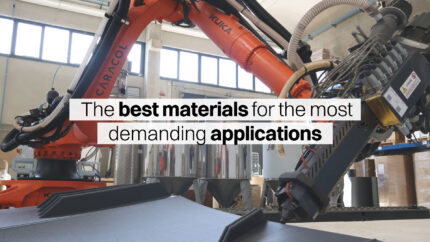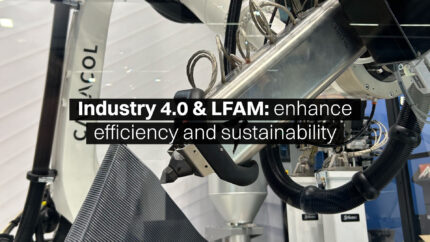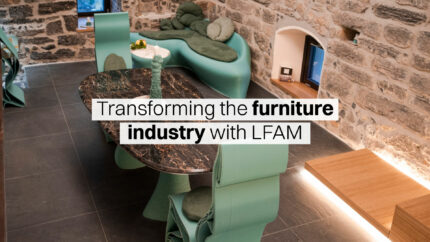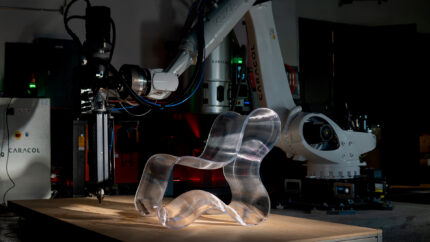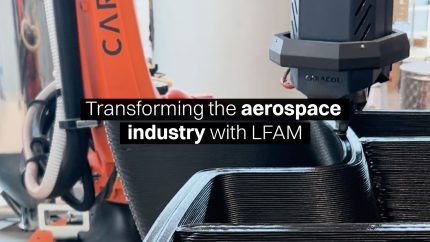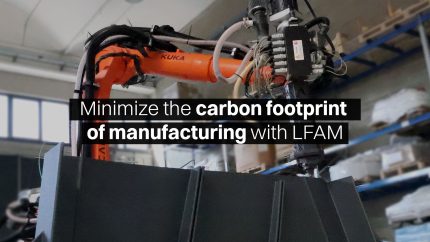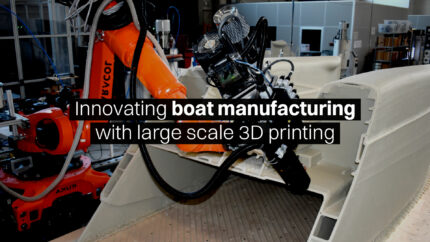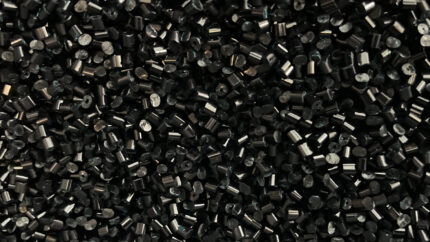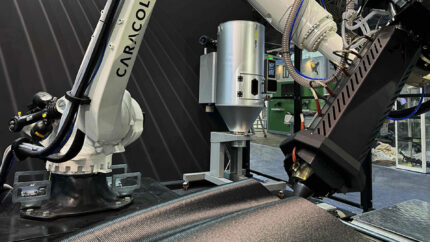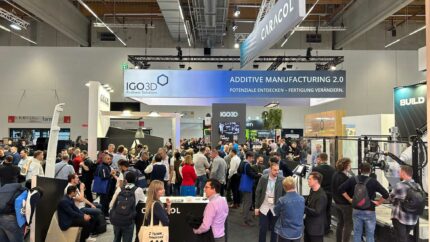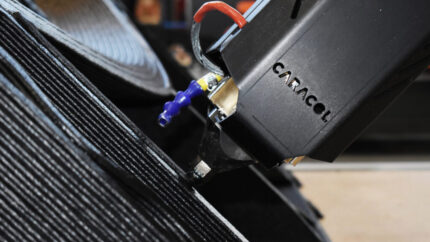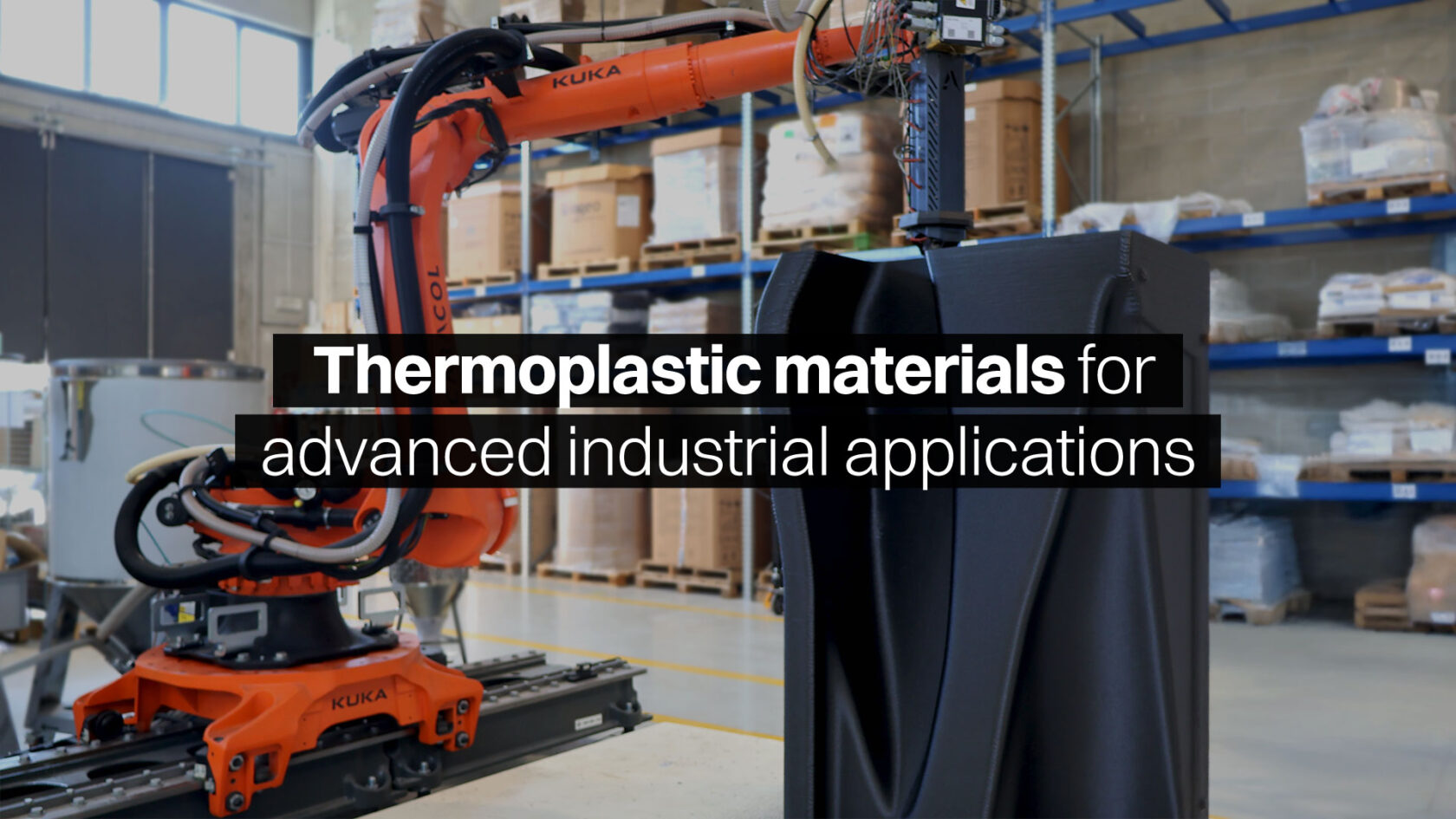
Understanding the advantages of thermoplastics 3D printing for demanding industrial applications.
In the evolving landscape of advanced manufacturing, thermoplastic 3D printing has emerged as a pivotal technology, offering unparalleled flexibility, efficiency, and sustainability. At Caracol, we harness this potential through our cutting-edge robotic advanced manufacturing platforms – Heron AM – to deliver innovative production solutions across industries.
By leveraging robotics, and automation, we push the boundaries of additive manufacturing, enabling the production of complex and high-performance, large-scale components.
Why thermoplastics are great for Additive Manufacturing
Thermoplastics are materials that naturally become pliable when heated and solidify upon cooling, a process that can be repeated multiple times without having the resins degrade significantly. This property makes them ideal for additive production, as they allow for malleability, producing parts layer by layer. The widespread use of thermoplastic 3D printing in industrial applications is driven by several key factors:
- Sustainability: many thermoplastic materials can be recycled, heated and shaped multiple times without significant degradation, reducing waste and promoting a circular economic approach.
- Performance: these materials can have excellent strength-to-weight ratio, impact-resistance, chemical compatibility, and thermal stability, making them suitable for demanding applications across industries.
Key thermoplastic materials for additive production processes
1. 3D printing polypropylene
Polypropylene (PP) is one of the most used polymers in additive manufacturing; thanks to its low density, chemical resistance and flexibility, PP delivers good mechanical performance. Polypropylene 3D printing is ideal for:
- Lightweight marine components
- Chemical and impact-resistant industrial parts and tools
- Weather-resistant furniture products
PP can present some challenges during the printing process, particularly due to its tendency to warp and its poor adhesion to the print bed, which can impact dimensional accuracy and part quality. Proper print surface preparation, enclosed build environments, and controlled cooling are essential to mitigate these issues. The integration of robotic LFAM technologies such as Heron AM within the manufacturing process allows for high-quality applications.
2. 3D printing polylactic acid
Polylactic acid (PLA) is a bio-based material, derived from processing sugars from corn and other natural, biodegradable non-petroleum materials. 3D printing polylactic acid offers advantages such as:
- Excellent surface finish
- Low warping and high dimensional stability
- Sustainability and eco-friendliness
PLA is widely used in applications such as design, art, and cost-effective prototyping. Its versatility and ease of use make it a popular choice for creating intricate designs, aesthetic models, and functional prototypes that do not require high mechanical performance. It is also can be compounded with natural fibers to create materials with a more natural feel (such as pine, olives, cork, or similar).
3. Polycarbonate 3D printing
Polycarbonate 3D printing is widely used in advanced applications where its mechanical properties are critical:
- High mechanical strength
- Heat and pressure resistance
- Dimensional stability under extreme conditions
PC is particularly suitable for aerospace and defense components, autoclave cure tooling and molds for the mobility industries and composite lamination tools. 3D printing polycarbonate with the robotic LFAM platform Heron AM allows the production of large and complex industrial applications, enhancing production efficiency and material performance.
4. Polyethylene terephthalate glycol (PET-G)
PET-G is a polyester-based polymer, it can be found in recycled, transparent, or glass fiber reinforced versions. The main advantages offered by PET-G are:
- Minimal shrinkage during the production process
- Robust combination of strength and flexibility
- Fire resistance (for the glass fiber reinforced version)
This stunning thermoplastic 3D printing material is perfect for finished parts in creative sectors or basic industrial requirements as it ensures flexibility across applications, whether you need durability or enhanced stiffness and UV resistance for outdoor use.
How Caracol’s advanced manufacturing technologies enhance thermoplastic 3d printing
Caracol’s proprietary Heron AM platforms revolutionize thermoplastic 3D printing by integrating automation, robotic and large format additive manufacturing capabilities. Heron AM enables:
- Scalability: producing large-scale parts without the limitations of traditional manufacturing methods.
- Material optimization: smart processing of thermoplastics to enhance their mechanical properties and minimize waste.
- Increased design freedom: manufacturing complex geometries that were impossible with conventional methods.
The future of thermoplastic 3d printing in additive manufacturing
As industries have increasingly adopted thermoplastic 3D printing, the demand for more efficient, automated and sustainable production methods will continue to rise. Advanced manufacturing solutions, like Caracol’s robotics system, Heron AM, will be key drivers of this evolution, positioning robotic manufacturing and LFAM as essential pillars of a more sustainable and efficient industrial future.
By 3D printing polypropylene, polylactic acid, polycarbonate, and other thermoplastic materials, Caracol continues to lead the industry toward smarter, more sustainable production strategies, transforming the way manufacturers approach design, prototyping and the production of high-performance parts.
